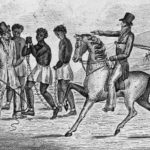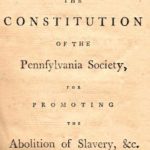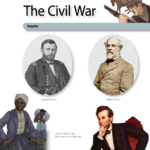The 150th anniversary of the District of Columbia Compensated Emancipation Act of 1862
occurred in 2012. This bill was introduced to Congress to end slavery in the District of
Columbia. Many citizens and members of Congress alike noted that the legality of slavery in
the District of Columbia was inconsistent with the ideals and aspirations of the nation. Congress
approved the bill, and President Abraham Lincoln signed the act.
This activity features the District of Columbia Compensated Emancipation Act of 1862 and
other primary and secondary sources that tell the story of Congress’s role in this first major step
toward the freeing of enslaved African Americans. While intended for 8th grade students, the
lesson can be adapted for other grade levels.
Gradual Emancipation of Slaves After 1780

This short video examines the gradual but limited emancipation that occurred before the Constitutional Convention. In Northern states, fewer slaves and less racist sentiment enabled states such as Pennsylvania to pass gradual emancipation laws while even some Southern states, where racism was more entrenched, made it easier for slaves to be freed. However, as Professor John Kaminiski notes, the great political leaders of the South took no bold actions to free their slaves.
Emancipation of Slaves Under the Constitution

This short video illustrates the approaches taken by the various states towards freeing their slaves. Pennsylvania and New York were among the first to provide a path to gradual emancipation, due in large part to the influence of Quakers and Methodists. Professor John Kaminiski discusses the various criteria for manumission: the age of the individual; what percentage of the individual’s racial background was African-American; and how well prepared the individual was for life as a freeman.
The Civil War (CKHG Unit)

This unit explores the political, historical and cultural causes and consequences before, during and after the Civil War, one of our nation’s greatest crises. Across 24 lessons, students engage with the material through primary sources and consider the influence of abolitionists and other intellectual as well as military and political figures.
This unit includes 24 lessons that are about 45 minutes each.
Reconstruction and Citizenship
Historian Eric Foner, of Columbia University, discusses the major changes in citizenship during and after the Civil War, particularly for African Americans.
Jim Crow Wisdom: Memory and Identity in Black America Since 1940
James Basker & Johnathan Holloway discuss the novel written by Mr. Holloway, Jim Crow Wisdom: Memory & Identity in Black America Since 1940.
